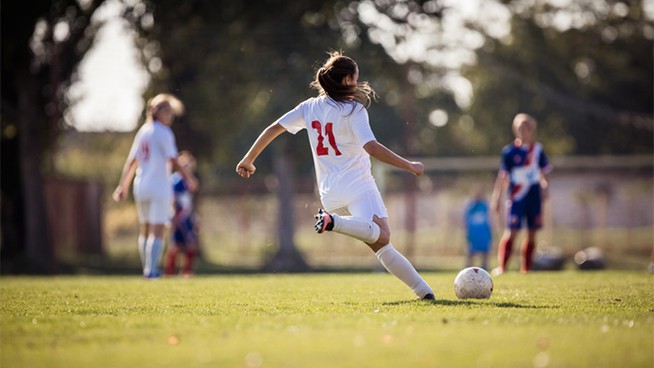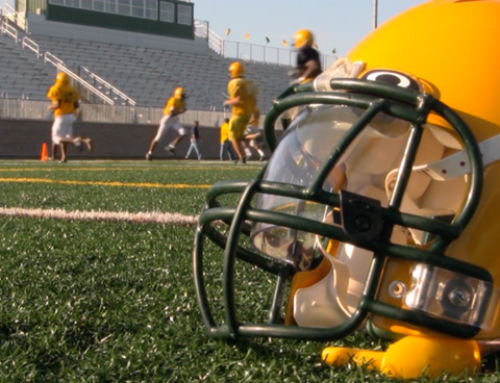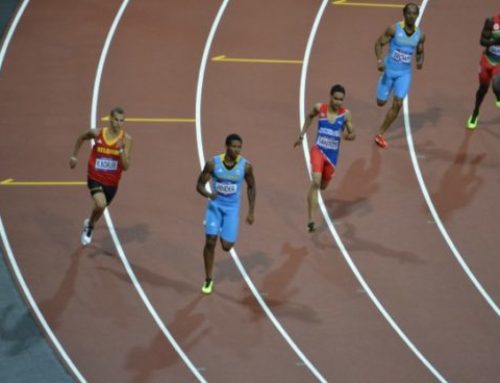The Skills Needed to Develop Agility
Agility is a confusing term for many athletes. Some see it as the ability to change direction as quickly as possible, which can be measured in drills like the 5-10-5 or 60-Yard Shuttle. Others view it as an athlete’s ability to react and change direction in a game situation.
In fact, agility is a combination of these two components.
A 2006 review out of the Australian Institute of Sport defined agility as rapid, whole-body movement with change of velocity or direction in response to a stimulus. This mean you must have raw change-of-direction speed but also possess the decision-making ability to quickly move in the correct direction.
Decision-Making
The most relevant and efficient means to improve decision making is to play your sport. As you become more experienced, you more readily anticipate and recognize situations, enhancing your ability to make the right decision during gameplay.
Acceleration
This aspect of agility can be improved with training. We emphasize ground reaction force (GRF) and its effect on acceleration. Change of direction, timed or otherwise, is largely gauged by the ability to accelerate out of it. So we recommend relatively straight-ahead drills that focus on acceleration, like 10-Yard Sprints. For deceleration drills, we repeat the agility drill over and over again to ensure technique improvement.
Leg Strength
The final component of improving change-of-direction speed is leg strength. Several research studies, most recently a March 2012 paper in the Journal of Strength & Conditioning Research, found that scoring high in the vertical jump test was associated with doing well in a change-in-direction test. This strong correlation makes sense, because a vertical jump is essentially a change of direction. Strong legs enable athletes to perform well in both tests.
If you’re running agility drill after drill, mix up your workout, and don’t forget how important straight-ahead speed and jumping are to your agility. Focusing on these components will actually result in improved agility, more so than simply doing ladder training and other low GRF activities.
Photo: blog.chron.com
RECOMMENDED FOR YOU
MOST POPULAR
The Skills Needed to Develop Agility
Agility is a confusing term for many athletes. Some see it as the ability to change direction as quickly as possible, which can be measured in drills like the 5-10-5 or 60-Yard Shuttle. Others view it as an athlete’s ability to react and change direction in a game situation.
In fact, agility is a combination of these two components.
A 2006 review out of the Australian Institute of Sport defined agility as rapid, whole-body movement with change of velocity or direction in response to a stimulus. This mean you must have raw change-of-direction speed but also possess the decision-making ability to quickly move in the correct direction.
Decision-Making
The most relevant and efficient means to improve decision making is to play your sport. As you become more experienced, you more readily anticipate and recognize situations, enhancing your ability to make the right decision during gameplay.
Acceleration
This aspect of agility can be improved with training. We emphasize ground reaction force (GRF) and its effect on acceleration. Change of direction, timed or otherwise, is largely gauged by the ability to accelerate out of it. So we recommend relatively straight-ahead drills that focus on acceleration, like 10-Yard Sprints. For deceleration drills, we repeat the agility drill over and over again to ensure technique improvement.
Leg Strength
The final component of improving change-of-direction speed is leg strength. Several research studies, most recently a March 2012 paper in the Journal of Strength & Conditioning Research, found that scoring high in the vertical jump test was associated with doing well in a change-in-direction test. This strong correlation makes sense, because a vertical jump is essentially a change of direction. Strong legs enable athletes to perform well in both tests.
If you’re running agility drill after drill, mix up your workout, and don’t forget how important straight-ahead speed and jumping are to your agility. Focusing on these components will actually result in improved agility, more so than simply doing ladder training and other low GRF activities.
Photo: blog.chron.com












